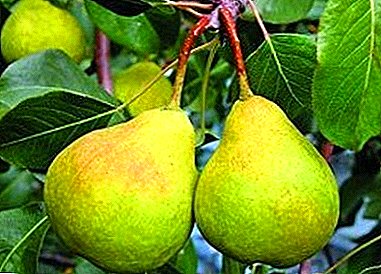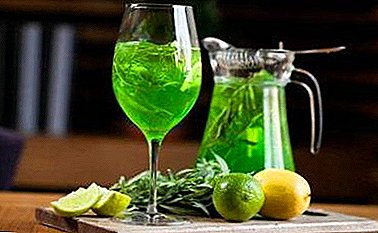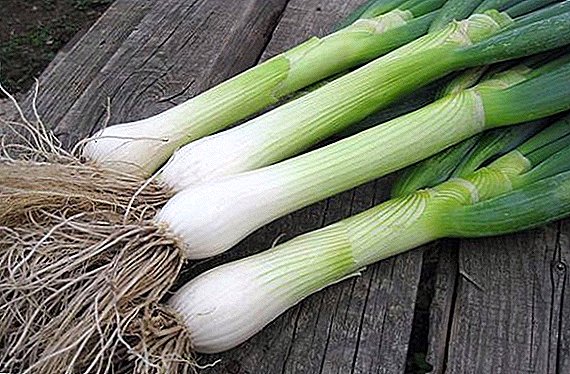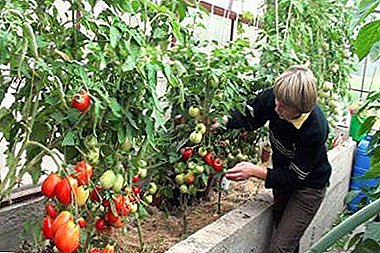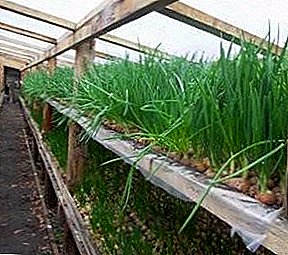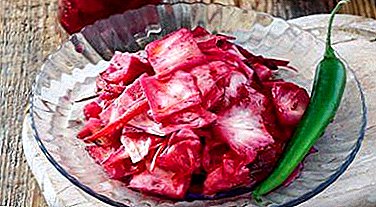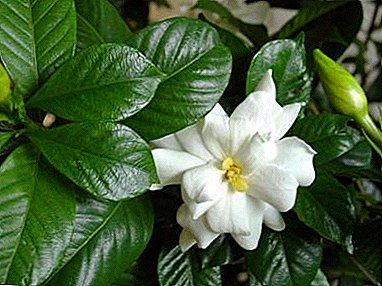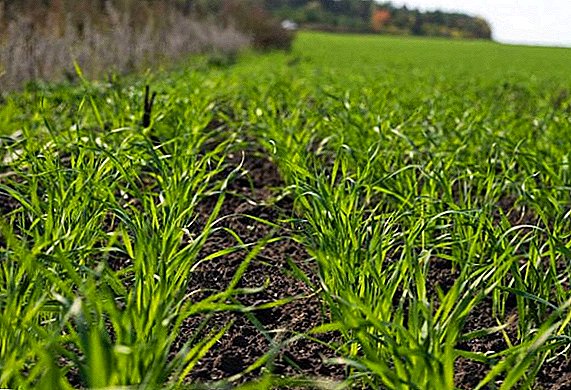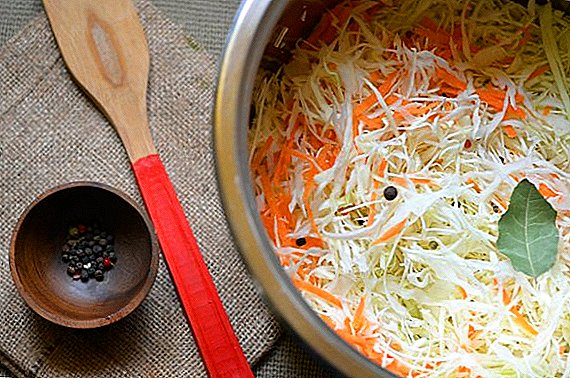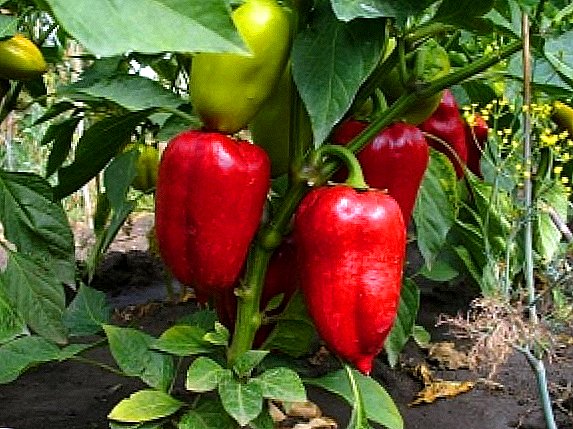
Bright sunny culture came to European countries as far back as the fifteenth century and has been in great demand since then.
There are about two thousand varieties of this plant.
Let pepper and capricious culture, but in growing it, lovers achieve very great results.
Growing peppers requires a lot of effort.
But newcomers in this business should not be upset, they need to be patient, because everything comes with experience.
In this article you will learn about the cultivation of sweet pepper in the open field and on more suitable crops for this method.
All you need to know about growing crops in open conditions
So, it is decided to grow peppers on the open surface. But which grade is more suitable for such conditions. Of course, it is necessary to choose the best early ripening varieties for the crop to ripen.
It is also necessary for yourself to determine for what purpose pepper is needed.
Useful tips that are worth paying attention to:
- Bitter and sweet varieties should be planted separately from each other. Because they pereopilyatsya, and when harvesting you make sure that the sweet pepper took a little bitterness from bitter.
- Manure must be introduced only under the predecessor culture, since if it is introduced under pepper, the leaves of the crop will actively grow, not the fruits themselves.
- Excellent neighboring cultures are basil, okra, onion coriander, marigold. Three last well protect pepper from aphids. But okra is a good protector from the wind.
- An unfavorable neighbor is beans. It is best not to plant them side by side, because they have a joint disease - anthracnose (the appearance of black spots on the culture).
Problems that may arise in the grower when growing crops:
- The first problem is lignification of the stems of the crop, falling leaves, ovaries and flowers. All this can occur under the wrong temperature conditions (more than +32 degrees), insufficient moisture in the soil or lack of sunlight.
- The second problem is the arrest of the growth of a plant or its flowering, as well as the arrest of the growth of the ovary. The cause of these problems can also be temperature (below +13 degrees), if watering is done with cold water, and the lack of light affects it.
- The third reason is the formation of crooked or ugly fruits. All this may be due to insufficient pollination of the culture.
What you need to know about the grade "Gladiator"

The name of the culture speaks for itself. Pepper has very large fruits weighing up to 350 grams. Acquire the shape of a truncated pyramid.
Culture wall up to 13 mm thick. The fruits are very juicy and fleshy.. The culture is green during the vision, and when fully matured it acquires a bright yellow color.
Culture belongs to the varieties of the Dutch selection. Pepper "Gladiator" refers to the varieties of medium ripening.
The bush is not very high in height is only 45-55 cm. Placement of pepper should be four plants per meter. The bush is semi-sprawling.
Gladiator will delight you with his yieldwhich makes up up to 50 tons per hectare.
What kind of gladiator features pepper has:
- Pepper boasts the size of the fruit.
- Culture is resistant to many diseases.
- Sufficiently high productivity of Gladiator pepper.
- Pepper is characterized by high commodity qualities.
- Culture has good transportability.
Bad quality is the fear of pepper windy areas and lack of sunlight.
Description of sweet pepper "Mummers"

Pepper "Mummers" also, like the "Gladiator" has very large fruits weighing up to 300 grams.
Fruits take the form of an elongated cone. Culture wall up to seven millimeters thick. The fruits are very juicy and tasty.
The culture at the time of view acquires a light green color, and when fully matured it acquires a bright red color.
Pepper "Mummer" is a variety of early ripening. Its growing season is slightly more than three months. Bush is very tall and takes place in a height of about 140 cm.
Pepper placement should be four plants per meter. Spreading bush and semi-determinant.
Pepper "Mummers" will please you with its yield, which is up to 11 kg / m2.
What boasts pepper "Mummers":
- Pepper has large fruits.
- Culture is resistant to many diseases.
- The plant is quite productive.
- Pepper "Mummers" is an early ripe culture.
- Pepper is characterized by high commodity qualities.
- Culture is not demanding on growing conditions.
Sweet pepper "Victoria" what can you say about this culture

Hanging pepper fruits. Pepper "Victoria" has an average fruit weight of up to 120 grams. Fruits take the form of a wide cone.
The culture wall is six millimeters thick. The fruits are very smooth, juicy and tasty.
The culture at the time of view acquires a light green color, and when fully matured it acquires a dark red color.
The best use of fruits is their canning.
Variety pepper "Victoria" is a very good variety of domestic breeding. Standard plant.
Pepper "Victoria" refers to varieties of medium ripeness. Its growing season is about four months.
The bush is low and reaches its maximum height of 60 cm. The bush is not too spreading.
Pepper "Victoria" will delight you with your yieldwhich makes up up to 7 kg / m2.
What boasts pepper "Mummers":
- Pepper "Victoria" is a variety of domestic breeding, which suggests that the variety is adapted to our growing conditions.
- Culture is resistant to all sorts of diseases.
- The plant has good yield.
- Pepper "Victoria" has good transportability.
- Pepper is characterized by high commodity qualities.
- Culture is characterized by great demand and popularity.
- The fruits can lie for a long time and at the same time retain all their taste.
Disadvantages in this class is not detected.
What is characteristic of sweet pepper "Yermak"

The fruits on the bush look dangling. Pepper "Yermak" has average fruits weighing up to 90 grams.
Fruits acquire their shape in the form of a pyramid. The culture wall is five millimeters thick. The fruits are very juicy and tasty.
Culture during its maturation acquires a dark green color, and when fully matured it becomes red.
Yermak sweet pepper variety refers to the breeding varieties of the Transdniestrian Research Institute of Agriculture and varieties of medium ripeness.
Its growing season is a little over three months. The bush is low and reaches its maximum in growth of 45 cm. The plant is semi-bunched.
The crop yield is up to 3.5 kg / m2.
What kind merits Has pepper "Ermak":
- Pepper "Yermak" is adapted to bad weather and temperature conditions.
- Culture is resistant to all sorts of diseases.
- Culture has a good yield.
- Pepper "Yermak" is characterized by excellent taste.
- Pepper is characterized by high commodity qualities.
- The fruits grow and ripen on the bush together.
There is nothing to say about the shortcomings of this variety.
Pepper "Zaznayka" its description, advantages and disadvantages

The fruits on the bush are not usually located and directed upwards. Pepper "Zaznayka" has average fruits weighing up to 150 grams.
The shape of the fruit is also very unusual heart-shaped prism. The culture wall is ten millimeters thick.
Fruits are characterized by density and heavy. They are very juicy and tasty. Culture during its maturation acquires a dark green color, and when fully matured it becomes red.
Pepper "Zaznayka" refers to varieties of early ripeness. Its growing season is about 3.5 months.
Pepper bush of medium height about 100 cm, semi-sprawling and semi-determinant. When planting on one meter of land should be located no more than four bushes.
The crop yield is up to 10 kg / m2.
What kind merits Characterized pepper "Learning":
- Culture is resistant to all sorts of diseases.
- Pepper "Zaznayka" has a high yield.
- Culture is characterized by high quality of fruits and high taste.
- Pepper is characterized by good keeping quality of fruits.
- A good quality of culture is a weak shedding of flowers.
- Variety pepper "Zaznayka" refers to varieties of early ripening.
There is nothing to tell about the shortcomings of this variety.
It is also interesting to read about the varieties of pepper for the Moscow region
What measures need to be observed when growing sweet pepper in open conditions
Pepper, like any other culture needs care. All you need to do is read below.
What should be the optimum temperature?

Acceptable temperature for growing peppers is from +20 to +25 degrees.
At a lower temperature, the plant should be covered with a film or other material.
If lilac stains appear on the culture, this indicates a poor temperature.
How to feed a plant?
During flowering culture is fed the following solution, which is diluted to one hundred liters of water:
- The first ingredient is six kilograms of nettle, dandelion or plantain.
- The second component of the solution is ten liters of cow dung.
- And finally, the third component is ten tablespoons of ash.
All components are mixed with water, allowed to brew for about seven days and then used for irrigation at the rate of one liter per plant.
During the period of flowering and fruit ripening, the culture is fed with another solution, to a one-hundred-barrel barrel consisting of:
- The first component is five liters of bird droppings.
- The second component is ten liters of cow dung.
All necessary components are mixed with water, and then insist about five days, then watered (six liters per square meter).
Feeding culture carried out on wet soil. Their number should be five times. The period between feedings should be no more than ten days. You can also carry out and dry feeding culture.
What should be the correct irrigation of culture?

The best way to water the crop is sprinkling. But not all that happens. Therefore, watering the plant with settled water, a temperature of about +25 degrees.
Watering mode should go in the following order:
- Before flowering culture is watered once a week, and in hot periods twice a week. The amount of water per square meter should be no more than 12 liters.
- During the flowering and ripening fruits up to three times a week, watered. The amount of water up to 14 liters per square meter.
How to loosen the soil?
Everyone knows the fact that the root system of pepper is located very close to the surface. therefore loosening is done with great care to a depth of no more than five centimeters simultaneously with hilling and weeding of the culture.
You should also remember about soil mulching, which will protect against excessive drying of the soil and weeds. Only this process should be carried out when the soil warms up, as the pepper is a heat-loving plant.
Is it necessary to conduct additional pollination of culture?
For more yield, of course, you need to carry out additional pollination of flowers. This process is produced in a dry, windless weather, as follows, it is easy to shake the trellis over flowering pepper.
Do I need to tie the culture?
Since the pepper has a brittle structure, which is easily broken, it must be tied to the pegs standing nearby. And next to the pepper is best to plant high crops that will protect it from the wind.


